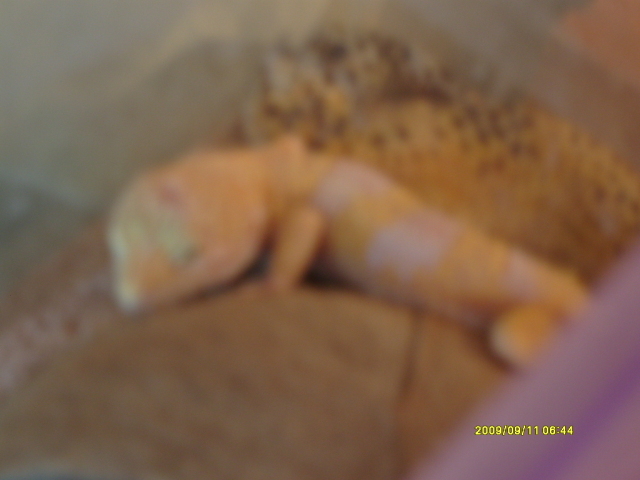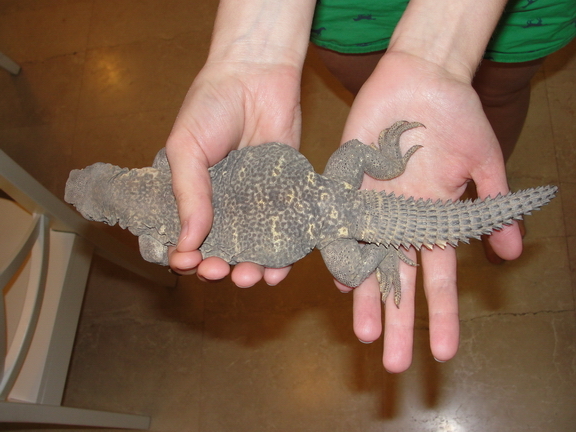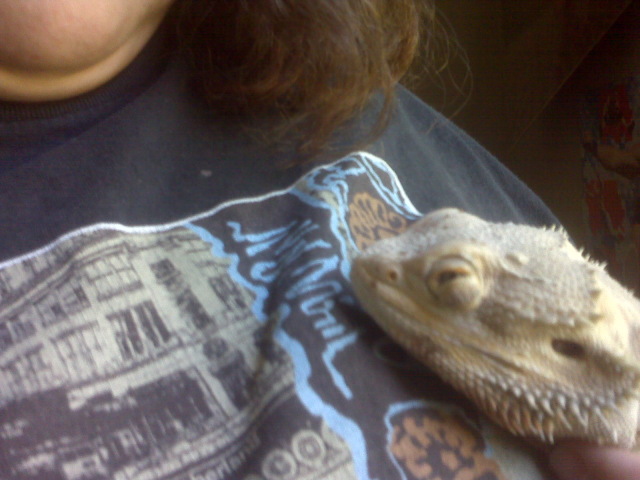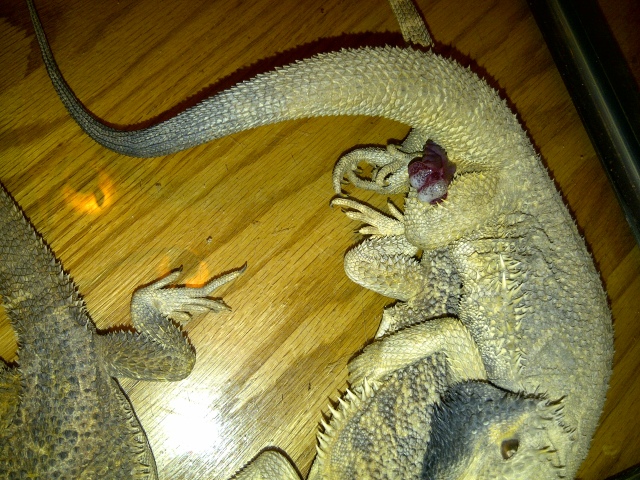QuestionI was wondering if there are any special treatments to pregnant geckos that differ from regular proceedings. Also what would be the proper handling of a gecko post-birth? Any tips beyond that would be greatly appreciated, thank you.
AnswerHi Julian
Your female will have used alot of her own calcium and energy stores to create her eggs and they usually lay a few clutches per season so replenishing those nutrients is important. I usually feed adult animals twice a week and supplement with calcium on one of those feedings but with gravid (pregnant) or recently post gravid females I increase that to 4 or 5 feedings a week and supplement 2 or 3 times. You may notice her taking smaller amounts of food as her eggs develop and take up space in her abdomen so the more frequent feedings can help with that. Don't be alarmed if she goes off food completely in the week or so before she lays.
You will need a moist laying chamber for her. I prefer moss over vermiculite which sticks to everything. Put it in the enclosure well before you expect her to lay. She will seek a moist spot to lay and will likely put the eggs in the water dish if the chamber is not available. Eggs drown quickly and it's a shame to lose them that way.
There's nothing more fun in reptile keeping then checking incubating eggs and seeing pipped eggs with noses sticking out.
They can take several hours to emerge but let them come out on their own, don't be tempted to help them. Hatchling leos typically don't feed for several days and often don't feed until after their first shed which is around a week after hatching. They will be feeding off the last of the absorbed egg yolk during that time. Baby reptiles are more prone to dehydration then adults so offer them a moist hide. You might want to soak them in a small amount of tepid water once or twice a week as well. I should also mention, just in case, that the babies cannot be housed with the parents.
When they do start feeding the crickets should be as long as the distance across the babies' heads, from eye to eye. Usually 1/4 size crickets are appropriate. People often refer to any baby crickets as "pinheads" but real pinheads are the size of fleas and are too small for hatchling leos. I like to offer food to hatchlings daily and supplement 3 or 4 times per week.
Baby reptiles are often more nervous and skittish then adults so handle the hatchlings over a close surface to avoid a big fall. They can bolt from your hand unexpectedly. Don't be surprised if they open up their mouths and hiss or vocalize as you reach in for them which is another defensive survival strategy.

 Just Got her...
Question
Tia Dalma
Hi Diane,
I have two Leopard Geckos
Just Got her...
Question
Tia Dalma
Hi Diane,
I have two Leopard Geckos
 Uromastyx leg paralysys
QuestionQUESTION: I live in Saudi Arabia and am keeping
Uromastyx leg paralysys
QuestionQUESTION: I live in Saudi Arabia and am keeping
 swollen eye on bearded dragon
Questionrockos eye
QUESTION: hello, i got a 2yr
swollen eye on bearded dragon
Questionrockos eye
QUESTION: hello, i got a 2yr
 My Green Water Dragon
Question
jan.1st
Can you possibly tell me what to look
My Green Water Dragon
Question
jan.1st
Can you possibly tell me what to look
 breeding beardies
Questiontrying to get together
QUESTION: I have
breeding beardies
Questiontrying to get together
QUESTION: I have